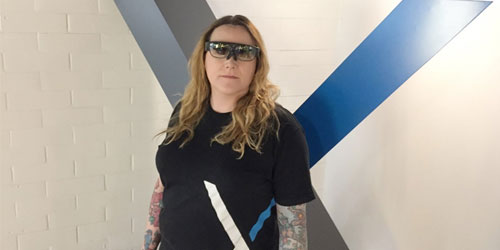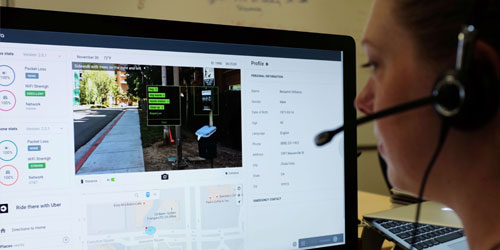By Nadia Morris
Picture yourself alone in your local shopping mall. You want to buy yourself a brand new black suit. You make it to your favorite store, and it’s time to shop for that suit. Now, imagine that same scenario except for one difference: the inability to see. Access to specific information – like where are the suits in the store? Do they have my color? My size? How much does it cost? – becomes a huge challenge.
Thanks to innovative technology, a pair of smart glasses could be the answer. These glasses give the blind/visually impaired more accessibility.
The start-up Aira came to the Connected Health AT&T Foundry to improve wireless connectivity for their groundbreaking platform. The technology uses connected glasses to give blind/visually impaired users information about their surroundings.
This month at CES 2017, we showcased how Aira’s connected glasses work on AT&T’s IoT platform at CES 2017, and we’re excited to share a little more background on why this collaboration is so important. Aira’s remote technology uses smart glasses to connect those with diminished vision to a network of certified human agents.
The user taps on the glasses to connect to an agent who offers assistance. Using a video camera, the agents can “see” from the wearer’s perspective in near real-time. Then, the agent can communicate back to the wearer.
We will be using AT&T Dynamic Traffic Management to help us do this. This innovative mobile data solution is designed to help businesses prioritize critical applications and data transmissions through the AT&T 4G LTE network. This helps alleviate the effects of congestion on the network, especially when responsiveness is a top priority – like navigating a busy crosswalk.
About 285 million people worldwide are visually impaired. Aira could help many of the blind and visually impaired complete daily tasks and new challenges with ease. Using public transportation, navigating busy streets, shopping at retail stores or recognizing people, without another person to physically accompany you, can be liberating.
We also worked to advance Aira’s human-assisted artificial intelligence (AI) to provide an experience similar to that of sighted people. And most importantly, do it quickly.
Though Aira currently uses human agents to assist the visually impaired, together we’re exploring ways to train AI through machine learning to create hybrid human/AI agent assistance for future applications. It’s potentially the best of both worlds.
Now, activities like independently shopping for a new suit are possible for the blind with Aira technology. I’m excited to continue pushing the boundaries on medical breakthroughs and technology at the Houston AT&T Foundry in effort help improve quality of life.
Check out the images below to learn more:

Aira uses wearable glasses to give blind/visually impaired users information about their surroundings.

Agents can “see” from the wearer’s perspective in near real-time, and then communicate information and instructions back to the wearer.

Start-up Aira came to the Connected Health AT&T Foundry in Houston to work with us on enhancing wireless connectivity for their groundbreaking technology platform.